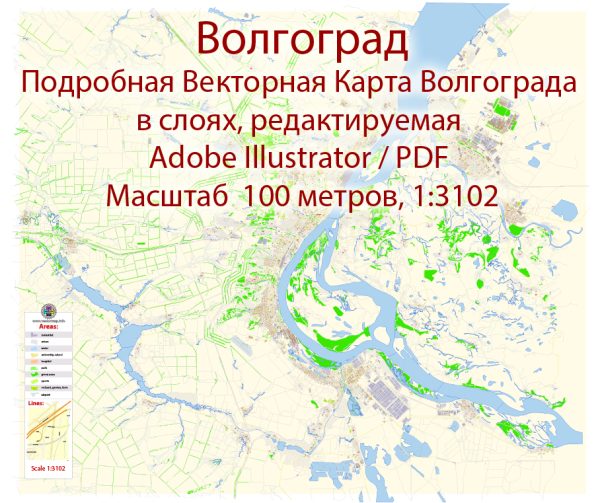Volgograd, located in southwestern Russia, has a history deeply intertwined with the key events of the 20th century, particularly World War II. Formerly known as Tsaritsyn and later Stalingrad, the city has experienced significant transformations in its urban development. Here’s an overview of key phases in the history of Volgograd’s urban development:
Early History:
- Foundation as Tsaritsyn (16th Century):
- Tsaritsyn was founded in the 16th century as a fortress on the banks of the Volga River. Its strategic location facilitated trade and defense.
- Tsaritsyn’s Development (17th-19th Centuries):
- Over the centuries, Tsaritsyn grew as a trading and administrative center. The city’s development was influenced by its location on the Volga, one of Russia’s major waterways.
Soviet Era:
- Renaming to Stalingrad (1925):
- In 1925, the city was renamed Stalingrad in honor of Soviet leader Joseph Stalin. This period saw industrialization and urbanization as the city became a major industrial center.
- Battle of Stalingrad (1942-1943):
- Stalingrad became globally significant during World War II due to the Battle of Stalingrad (1942-1943). The city endured a brutal siege, and the battle marked a turning point in the war, with the Soviet Union emerging victorious.
Post-War Reconstruction:
- Post-War Rebuilding:
- After the war, Stalingrad underwent extensive reconstruction. The city had suffered widespread destruction during the conflict, and efforts were made to rebuild its infrastructure, industries, and housing.
- Renaming to Volgograd (1961):
- In 1961, as part of the de-Stalinization efforts under Nikita Khrushchev, the city was renamed Volgograd, reflecting its geographical location along the Volga River.
Late Soviet and Post-Soviet Era:
- Continued Industrialization:
- Volgograd remained an important industrial center during the late Soviet period, with a focus on heavy industries, including manufacturing and petrochemicals.
- Economic Diversification (Post-Soviet):
- After the collapse of the Soviet Union, Volgograd faced economic challenges. Efforts were made to diversify the economy, attract investment, and modernize industries.
Contemporary Volgograd:
- Monuments and Memorials:
- Volgograd is known for its monuments and memorials commemorating the Battle of Stalingrad. The Mamayev Kurgan memorial complex, including The Motherland Calls statue, is a prominent symbol of the city.
- Volgograd Arena (2018):
- The city gained international attention when it hosted matches during the 2018 FIFA World Cup. The construction of the Volgograd Arena was part of the city’s preparations for the tournament.
- Urban Renewal and Infrastructure:
- Volgograd has undergone urban renewal projects, including the development of public spaces, parks, and modern infrastructure. These efforts aim to enhance the quality of life for residents and attract visitors.
- Cultural and Educational Institutions:
- The city is home to cultural and educational institutions, including universities and museums, contributing to its cultural vibrancy.
Volgograd’s history is marked by its resilience and reconstruction following the devastation of World War II. The city’s modern identity reflects a balance between honoring its historical significance and embracing contemporary development and cultural growth.


 Author: Kirill Shrayber, Ph.D.
Author: Kirill Shrayber, Ph.D.